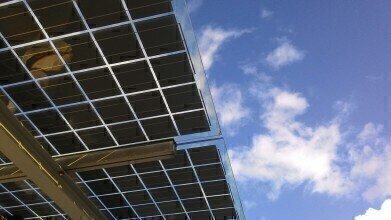Air Clean Up
Do Solar Panels Work in Heavily Polluted Areas?
Sep 16 2018
Transitioning to clean, renewable forms of energy is a key way to curb our carbon footprint, limit the emission of harmful pollutants and clean up the national and international airways. With solar panel technology becoming increasingly more sophisticated and affordable, harnessing the power of the sun’s rays is a logical way to do this.
Unfortunately, the functionality of those solar panels may be being hindered by the very air pollution it is trying to alleviate. According to a new study published in Energy and Environmental Science, urban haze may be compromising a solar panel’s ability to work by as much as 17%. In some cases, this can mean the difference between the technology operating at a profit or a loss.
Shining a light on photovoltaics and smog
Two of the study’s authors, Ian Marius Peters and Andre Nobre, first became interested in the idea that air pollution could compromise photovoltaic functionality in 2013, when immense amounts of pollution from Indonesia engulfed the city state of Singapore, where both were working at the time. They have spent the intervening years searching for a way to quantify the problem in concrete terms, with their findings finally being published last month.
The difficulty lay in determining how much of the sun’s radiation was being absorbed by particulate matter (PM) present in the air, but after years of experiments, the pair finally struck upon a formula that works. This allowed them to assess how differing levels of air pollution affect the functionality of urban environment solar panels around the world.
Delhi top of the pile
Their initial experiment took place in the Indian capital of New Delhi over a two-year period from 2016 to 2017. During that time, they determined that urban haze hampered the effectiveness of solar panels by an average of 12%, which for some businesses is within their profit margin. This means that not only could it mean the solar installation itself was a failure, but also could have a knock-on effect by discouraging others from investing in solar power technology.
The team later expanded their experiment to include 16 other cities around the world. The least polluted place surveyed was Singapore, which saw its solar panels lose 2% of their capacity to ambient pollution. Conversely, cities like Beijing, Kolkata and Ulanbaatar solar panels lost more than 9% of their potential to the smog which hangs over the city. The study provides even more evidence that action to improve air quality and reduce transport-related pollution is urgently needed.
Other photovoltaics even more at risk
The study’s authors also carried out the same experiments on other forms of solar energy generation, such as cadmium telluride, gallium arsenide and the most recently discovered technology perovskite. Alarmingly, all of them were more susceptible to losing energy to pollution than standard silicon, with the highly promising perovskite the most adversely affected. In Delhi, perovskite panels lost 17% of their capability.
In monetary terms, this means that Delhi could lose around $20 million every year due to solar energy being swallowed by pollution. In other locations, the losses were similarly substantial: Kolkata stands to lose $16 million, while state-of-the-art installations in Los Angeles could lose up to $9 million. As such, the costs of air pollution could be astronomical, both in fiscal and health terms.
Events
Apr 22 2024 Hannover, Germany
Apr 23 2024 Kuala Lumpur, Malaysia
Apr 24 2024 Sao Paulo, Brasil
May 05 2024 Seville, Spain
May 13 2024 Munich, Germany














